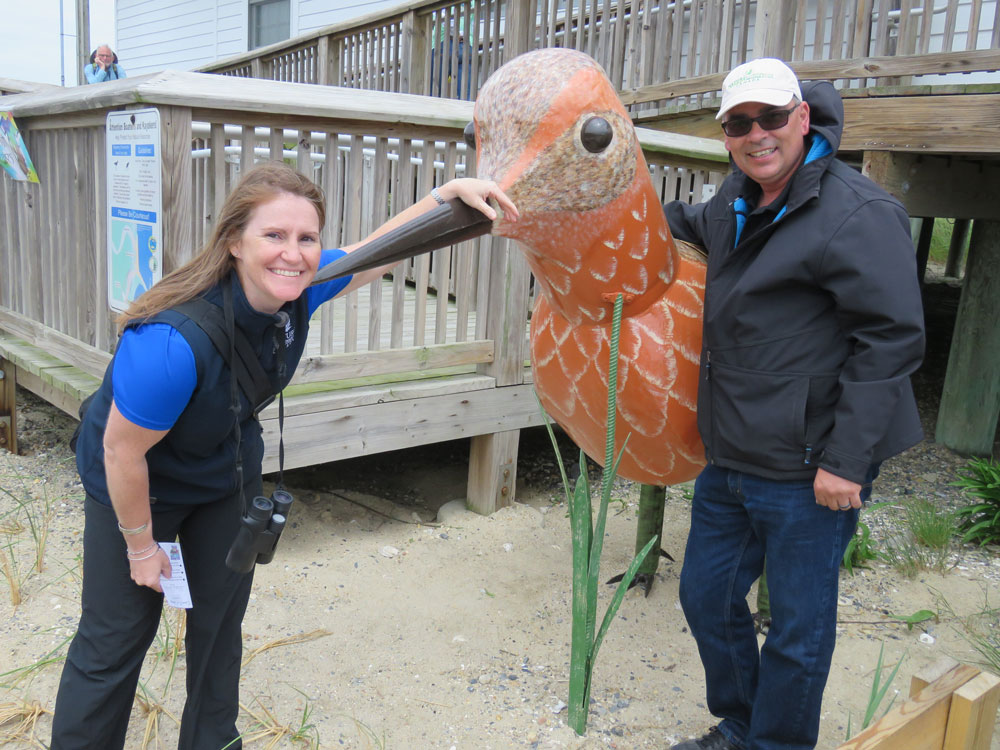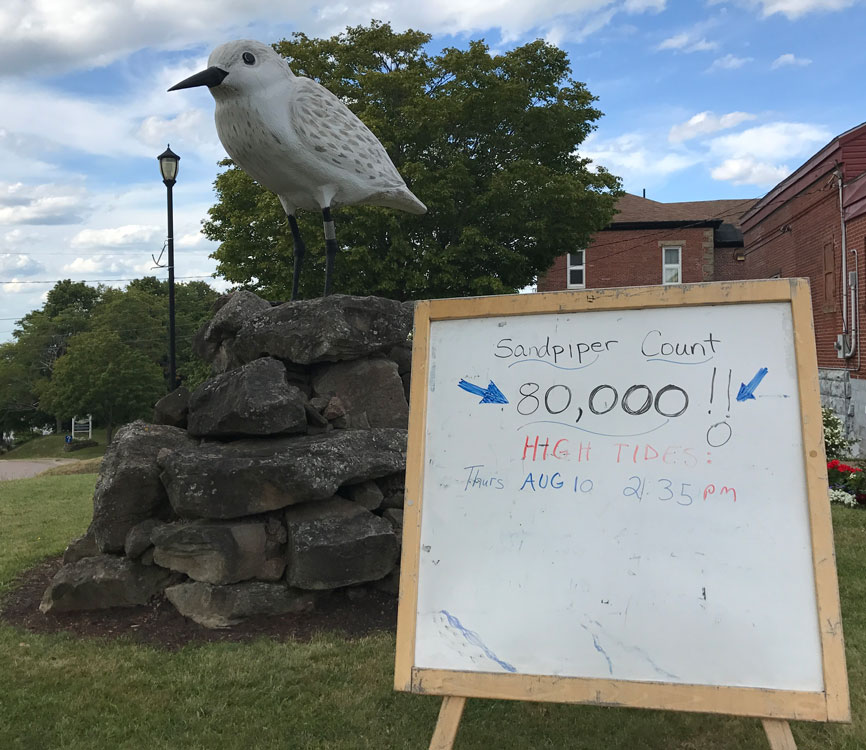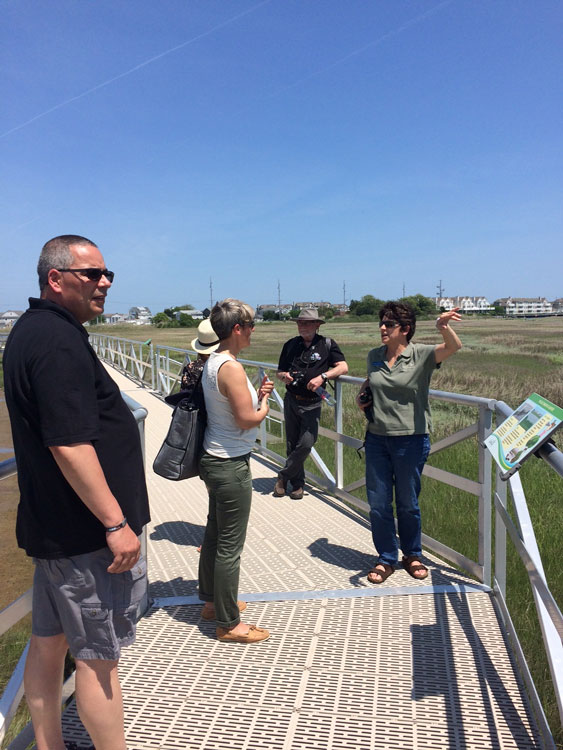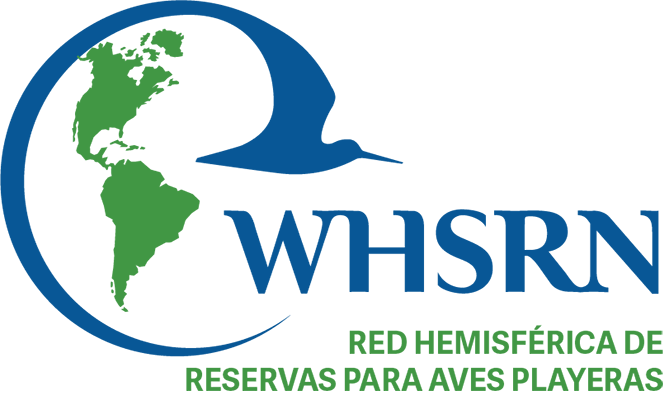The world’s largest Semipalmated Sandpiper meets the world’s largest Red Knot.
Ok, technically, the world’s largest Semipalmated Sandpiper and the world’s largest Red Knot don’t fly so they haven’t meet, but their human stewards did. Four representatives from Nature Conservancy of Canada/Conservation de la nature Canada and the Village of Dorchester, Brunswick, Canada joined us for May on the Bay.
The two sites have much more in common then a love for giant shorebird art. They are both Western Hemisphere Shorebird Reserve Network (WHSRN) sites, Delaware Bay the first in 1986, and Bay of Fundy the second in 1987. They both support awesome numbers of shorebirds, hundreds of thousands each year. Delaware Bay in the spring and Bay of Fundy in the fall. Both sites also have a drive to work with local communities and visitors for successful conservation. It was this drive that brought us together this year.

Bay of Fundy visitors check-in with Dupont Nature Center’s most popular Red Knot. Photo: Kerry Lee Morris-Cormier.
The Bay of Fundy visitors attended two shorebird festivals, met with local partners and community leaders, learned about other community engagement activities, and discussed opportunities for community engagement to support conservation and economic development goals. The Bay of Fundy visitors’ primary goal was to use their Delaware Bay experience to build on and expand their Dorchester Shorebird Festival, but while exploring the area and learning about the community engagement activities here, many more ideas were sparked. The Wetlands Institute, DuPont Nature Center at the Mispillion Harbor Reserve, New Jersey Nature Conservancy, and Middle Township, all took time to share their experiences. Partnerships were built with the hope for long-term exchange and even shared projects.

World’s largest Semipalmated Sandpiper roosting in Dorchester, New Brunswick, Canada. Photo: Monica Iglecia.
Two other site exchanges were also conducted with representatives from the Moose Cree First Nation in James Bay, Ontario, Canada and from United States Fish and Wildlife Service in Pacific Northwest. The Moose Cree First Nation are stewards of the James Bay proposed WHSRN site, a critical stopover site for migrating shorebirds on their homelands. This exchange was focused on scientific research, the overall conservation effort along the Atlantic flyway, and the connection between James Bay and these other sites. The USFWS representative from the Pacific Northwest was focused on learning more to expand bird banding at the recently dedicated Willapa Bay WHSRN site in Washington, United States.

Learning from the passport game at Peace, Love, and Horseshoe Crab festival at Dupont Nature Center. Photo: Kerry Lee Morris-Cormier.
Thank you to the Commission for Environmental Cooperation (CEC) for their funding and support for each of these exchanges. CEC is a tri-national organization dedicated to the protection, conservation, and enhancement of North America’s environment.

Learning more about The Wetlands Institute activities in Stone Harbor.





